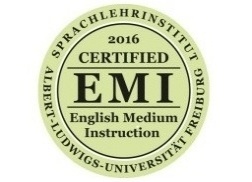Aolian Islands 2009
Field trip Aeolian Islands 2009
Albert-Ludwigs-Universität Freiburg
Geowissenschaftliches Institut
Leaders: Dr. Fleurice Parat
Duration: 8 days (31.05.2009 - 07.06.2009)
Subject: volcanology, mineralogy, petrology
Report by Dustin Marquardt
A group of 17 students led by Dr. Fleurice Parat accompanied by Ella Goldenberg went on an excursion to southern Italy. On the Aeolian Island Archipelago a series of volcanic rocks and events were looked at. Each day was reserved for one of the different islands to get an impression of island arc volcanism. On Lipari, the local expert Paola Donato joined the group and helped organize the rest of the excursion.
The first two days were about Lipari itself. Lipari is the largest of the Aeolian Islands. The volcanic activity ranges back to at least 223 ka to recent time. The last eruption on Lipari took place in the fifth century AD when the Rocche Rosse obsidian lava flow was generated. Lipari's volcanic history can be divided into three periods, the Pre-Tyrrhenian (223-124 ka), the Tyrrhenian (124-81 ka) and the Post-Tyrrhenian (starting 81 ka) stages. Each stage has a different signature in terms of magma geochemistry and eruption style. Furthermore, each stage built up a different part of the island. Terraces of marine conglomerates on Lipari show evidence of paleo sea levels, an excellent hint on the climate of former millennia.
The third day we went onto Vulcano, the southernmost volcanic island of the Aeolian Archipelago. The day started with an exhausting hike up to the crater rim. On the way up we could see active volcanic activity in form of fumaroles. Additionally, a wide view from a plateau half way up allowed us to have a look at every one of the sub aerial volcanic islands. In 183 BC, a smaller volcanic edifice, called Vulcanello, was formed north of Vulcano. Due to sedimentation the two parts were joined eventually. The last volcanic activity on Vulcano happened between 1888 and 1890.
The third volcanic island to look at was Salina. A motor boat transferred us from Lipari to Salina on the fourth day, were we had a look at the oldest sub aerial volcanism of the archipelago. Amongst other things we could have a look at a dune like structure formed by pyroclastic flows. A violent plinian eruption ended volcanic activity on Salina in 13 ka BC.
On the fifth day, which was probably the most exciting one, we went to Stromboli, a constantly active volcano, in fact one of the most active ones in the world. At night we had a look at the gorgeous strombolian eruptions. Every 10 to 20 minutes a fountain of glowing, red lava was shot into the black sky just to land on the Sciara Del Fuoco, a large scale slide on which tones of rocks rolle into the sea every hour.
We used the last day to take a touristic tour through the ancient town of Pompeii. After a week of fun, good weather and with a lot of new experiences and knowledge we flew back to Germany the next morning.
Click here to see the image gallery...


